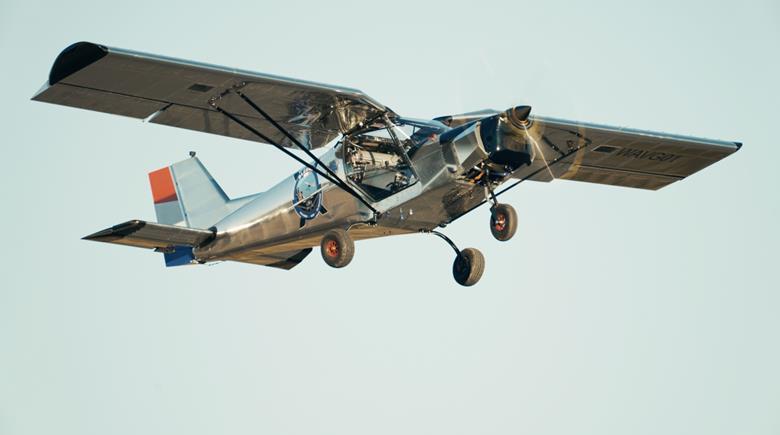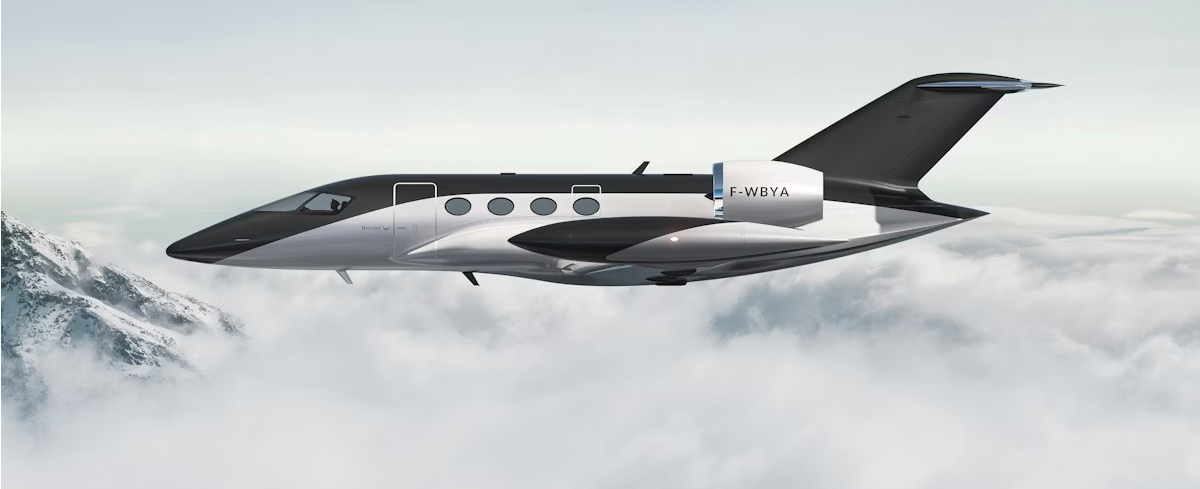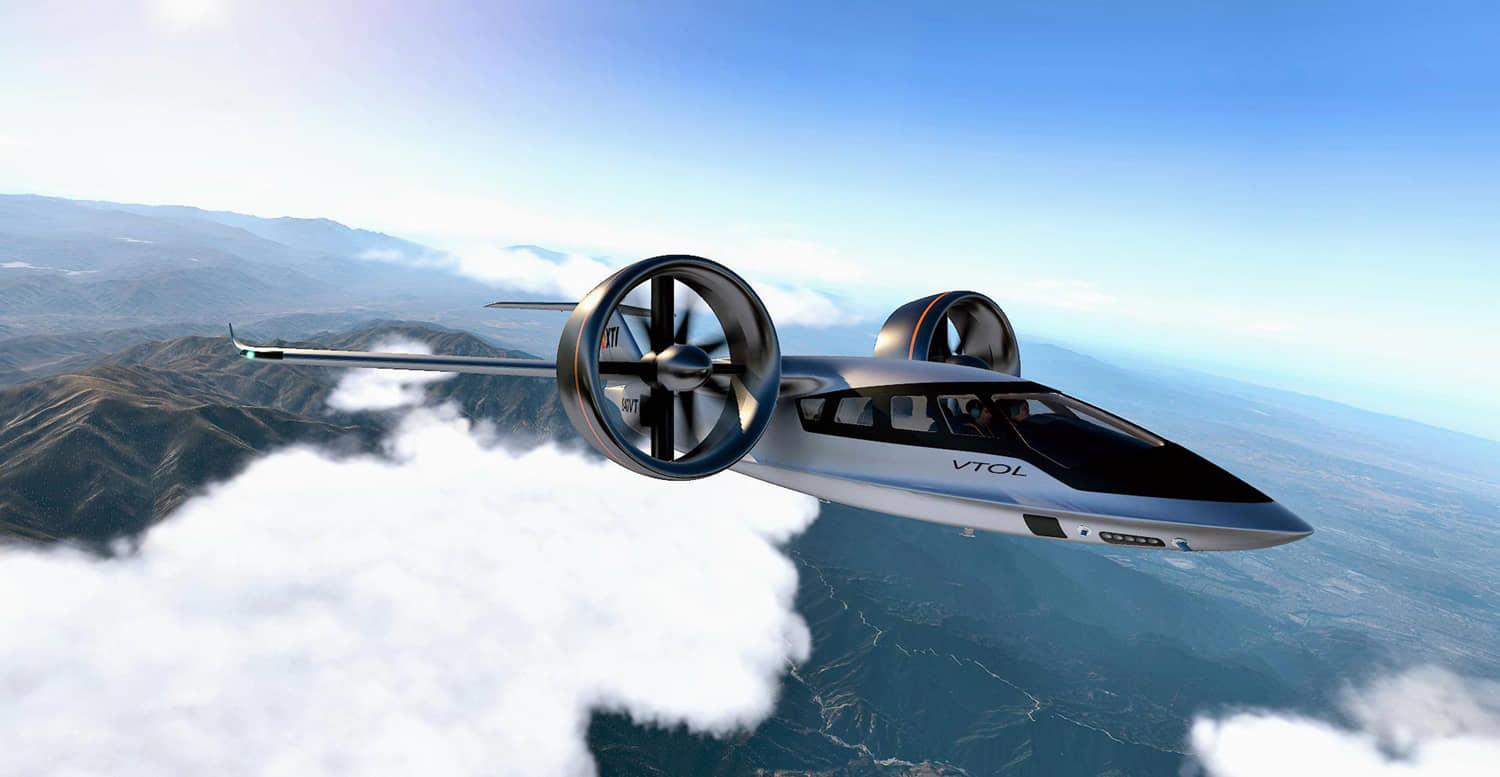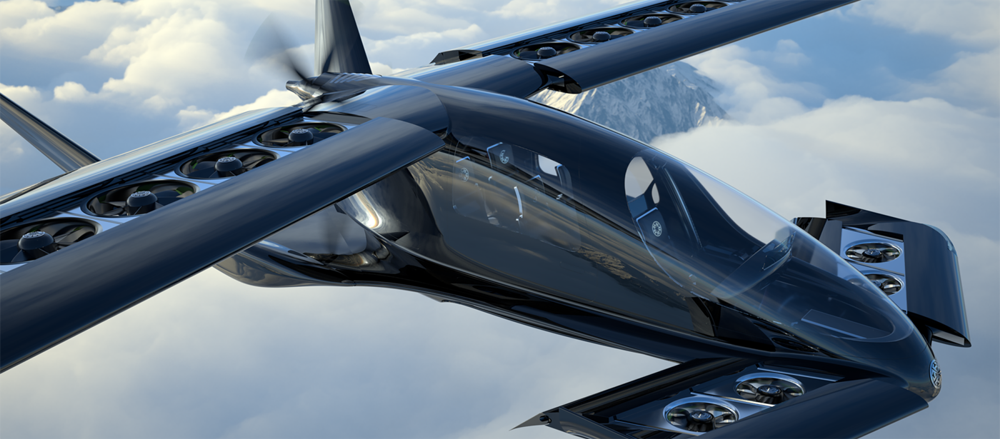Beyond Aero, a French startup founded in 2020, is developing a hydrogen-electric business jet, the BYA-1 (also referred to as "One"). Designed as a clean-sheet aircraft optimized for hydrogen propulsion, the BYA-1 aims to decarbonize private aviation without compromising performance or luxury. With a targeted entry-into-service date before 2030, This concept aircraft represents a potential contribution to zero-emission air travel.
Beyond Aero was founded in Toulouse, France, by aerospace engineers Eloa Guillotin, Hugo Tarlé, and Valentin Chomel. Recognizing the environmental impact of private aviation, which emits up to 14 times more CO₂ per passenger mile than commercial flights, the founders set out to create a hydrogen-electric business jet tailored for sustainability.
Eloa Guillotin, a UC Berkeley graduate, drew inspiration for this project from her time studying advanced propulsion systems and sustainable energy solutions. Her vision was to address the disproportionate carbon footprint of business jets while creating an aircraft that would appeal to environmentally conscious high-net-worth individuals and corporations.
The startup has secured €24 million ($25 million) in funding from private investors and the French government under the France 2030 initiative. A $20 million Series A extension in 2024 brought total funding to $44 million, enabling Beyond Aero to establish a $12 million Hydrogen Electric Powertrain Lab. This facility tests critical components like hydrogen storage systems, fuel cells, and thermal management architectures.
Technological Innovations
Propulsion System: The BYA-1 features a hybrid propulsion system powered by hydrogen fuel cells and batteries. The fuel cells generate electricity by combining hydrogen with oxygen, emitting only water as a byproduct. Two 500-kilowatt electric ducted fans provide thrust, with batteries offering additional power during takeoff and climb.
Hydrogen Storage: Gaseous hydrogen is stored at 700 bar in conformal tanks beneath the fuselage. This design maximizes cabin space while centralizing mass for better stability. While the initial design uses gaseous hydrogen, Beyond Aero plans to transition to liquid hydrogen post-2035 to extend range capabilities.
Thermal Management: Managing waste heat from fuel cells is a critical challenge. The BYA-1 employs an innovative cooling system with a half-moon-shaped air intake at the rear fuselage. Compact microchannel heat exchangers efficiently dissipate heat while minimizing aerodynamic drag.
Performance Metrics
The BYA-1 is designed for six to eight passengers and has an operational range of 800 nautical miles (nm). While its range is shorter than that of conventional jets like the Cessna Citation M2 (1,200 nm), it covers over 85% of business aviation routes in Europe.
| Parameter | BYA-1 Specification | Conventional Equivalent |
|---|---|---|
| Range | 800 nm | Cessna Citation M2: 1,200 nm |
| Cruise Speed | 310 KTAS | Embraer Phenom 300E: 453 KTAS |
| Runway Requirement | 2,800 ft | Gulfstream G280: 4,810 ft |
| CO₂ Emissions | 0 kg/hr | HondaJet Elite II: 1,200 kg/hr |
| Noise | 65 dB | Typical BizJet: 85 dB |
Passenger Benefits
The BYA-1 offers several advantages that enhance the passenger experience:
- Reduced Noise Levels: At just 65 dB during takeoff, it is significantly quieter than conventional jets, enabling operations at noise-restricted urban airports.
- Zero-Emission Travel: Passengers can enjoy guilt-free luxury travel, knowing their flight produces no carbon emissions.
- Spacious Cabin Design: The placement of hydrogen tanks beneath the fuselage preserves cabin space for comfort and luxury amenities.
Development Milestones
Demonstrator Program: In early 2024, Beyond Aero completed flight tests with its demonstrator aircraft "Blériot," a modified ultralight powered by an 85-kilowatt hydrogen-electric powertrain. The tests validated key technologies such as hybrid energy systems and thermal management strategies.

Full-Scale Prototype Timeline
- 2025–2027: Ground testing of integrated powertrains using retired business jet airframes.
- 2028: First flight of the full-scale prototype.
- 2029: Certification under EASA’s CS-23 regulations.
- 2030: Entry into service.
Challenges and Risks
Hydrogen Infrastructure Challenges: Hydrogen fueling infrastructure remains one of the biggest hurdles for adopting hydrogen-powered aircraft. Beyond Aero is working with over 50 airports through initiatives like the Hydrogen Airport joint venture (Air Liquide + Groupe ADP) to establish supply chains at key locations such as Paris Le Bourget and Van Nuys Airport.
Infrastructure Phased Rollout
- 2025–2027: Mobile refuelers for compressed gas delivery.
- 2028–2030: Onsite production using renewable energy-powered electrolyzers.
- Post-2035: Transition to liquid hydrogen storage for extended-range variants.
Despite current costs of $16 per kilogram for green hydrogen at 700 bar (equivalent to $1,920 per full tank), scaling production could reduce costs to $11 per kilogram by 2035.
Technical Risks
- Fuel Cell Longevity: Current stacks last ~5,000 hours compared to airframe lifespans of ~20,000 hours. Beyond Aero is developing nickel-coated bipolar plates to extend durability to ~15,000 hours.
- Cold Weather Performance: Specialized filters are required for Arctic operations due to hydrogen purity requirements.
- Transient Response Issues: Slow ramp rates in fuel cells are mitigated by battery buffering during high-demand scenarios like go-arounds.
Regulatory Delays
Certification frameworks for hydrogen-powered aircraft are still nascent. Beyond Aero collaborates with EASA’s Hydrogen Aviation Regulatory Framework Working Group to co-develop the standards of tank inspection and fire suppression systems.
Competitive Landscape
Beyond Aero operates in a growing field of hydrogen aviation innovators but distinguishes itself through its clean-sheet design approach.
| Company | Aircraft | Propulsion | Range | Entry Date |
|---|---|---|---|---|
| ZeroAvia | ZA600 | H₂ Fuel Cell | 300 nm | 2025 |
| Universal H₂ | ATR-72 Retrofit | H₂ Combustion | 500 nm | 2028 |
| H2FLY | HY4 | H₂ Fuel Cell | 500 nm | 2027 |
| Blue Spirit | Dragonfly | H₂ Fuel Cell | 650 nm | 2031 |
Unlike retrofit solutions that inherit design constraints from existing airframes, Beyond Aero’s clean-sheet design optimizes efficiency specifically for hydrogen propulsion.
Conclusion
Beyond Aero's BYA-1 represents an ambitious step toward decarbonizing business aviation through innovative hydrogen-electric propulsion technology. By targeting high-margin markets willing to pay green premiums and collaborating on infrastructure development, Beyond Aero is well-positioned to lead the transition toward sustainable private air travel.
While challenges remain—particularly around certification and infrastructure—the company’s progress underscores its potential to deliver zero-emission luxury flights before the end of this decade.




